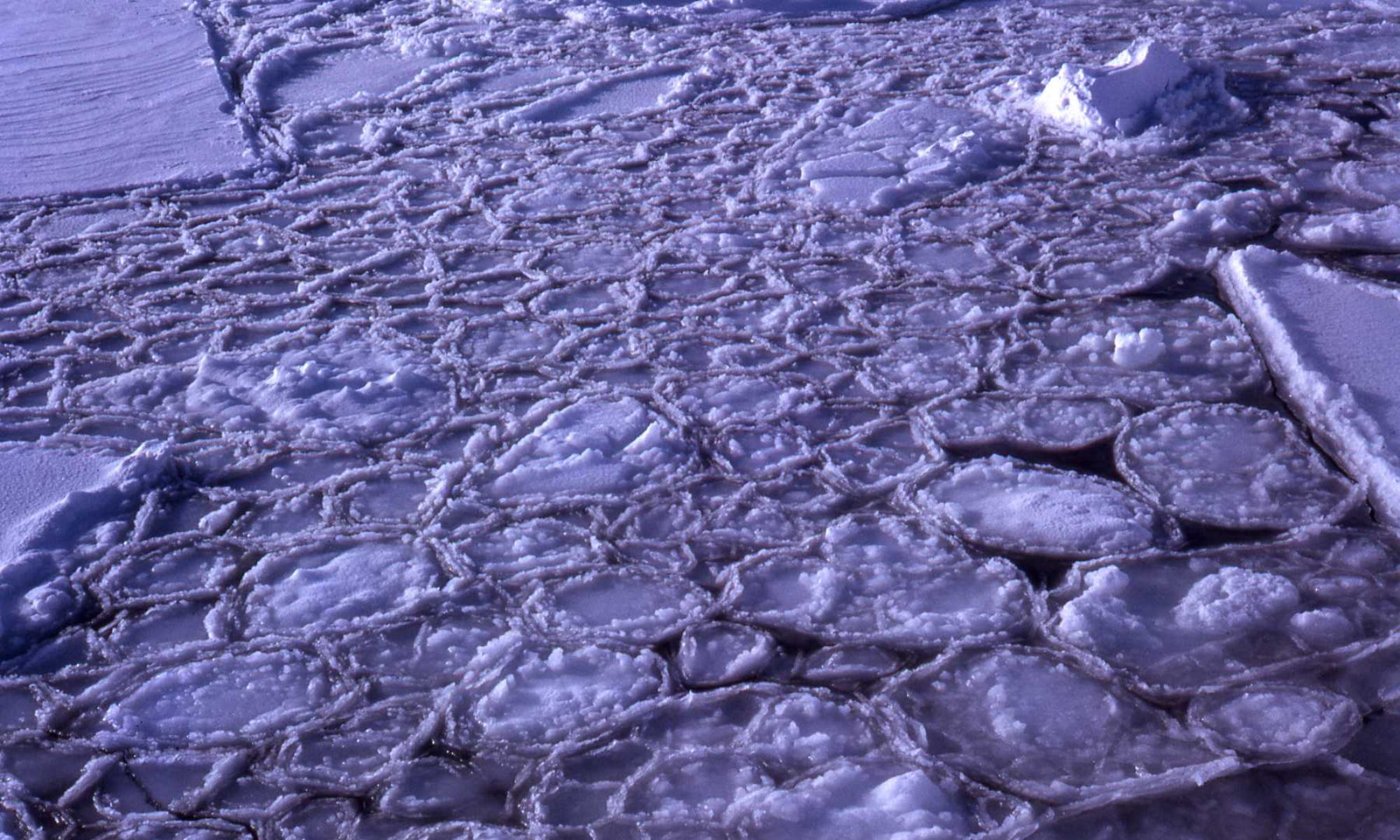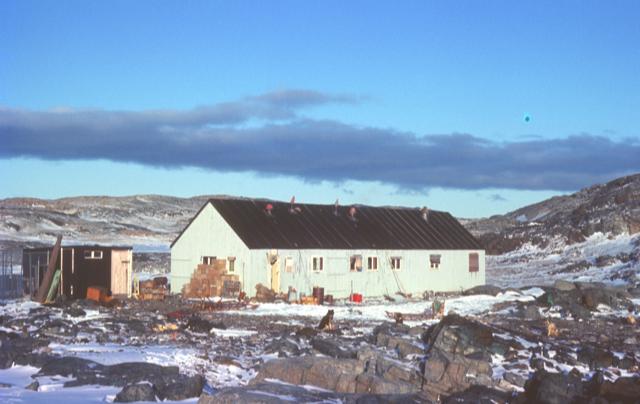The Landing at Horseshoe – Dave Matthews
All night the sound of the rising wind rushing past the porthole kept me half awake, wondering if the weather would get too bad for a landing, but in the grey dawn light of a polar autumn things started to happen on deck. The launch on the “Shackleton”, its engine kept running all night so that the fuel pumps would not freeze, was jerked out of its cradle and was swung out over the ship’s rail. The winch held it at deck level, swaying and banging against the ships side while supplies were loaded into it with the waves hissing just below.
First the dogs; no easy matter to coax seven nervous huskies one at a time to jump across the gap into the swaying launch before being tied firmly so that no fighting could break out. Scared huskies are one thing, but a full-scale fight in that precarious situation could have been a big problem.
The winch man picking a good moment, there was a sudden sickening drop and a sheet of freezing spray flung up against the ice-caked side of the ship now towering above us, then the heavy throb of the diesel as it pushed us away from the shelter of the ship’s side, butting into the chop with icy spray flung stingingly into our faces by the wind.
Soon the landing place loomed ahead through the murk, the grey shuttered bulk of the old hut appearing fitfully. Hands and feet scrabbled for some grip on the snow-covered rocks of the shore, then the heavy frozen ropes were thrown and made fast. Manhandled once again, the dogs looked unhappy, but cheered up visibly as their feet touched solid ground again.
More loads of supplies followed as the launch shuttled backwards and forwards between ship and shore. Sledge, tent, personal belongings in bags and boxes and then the heavier stores; our lifeblood for the unknown months ahead. Heavy boxes of food, sacks of coal for the stoves, gallons of diesel fuel in heavy drums and finally fresh dog food in the form of seal carcasses shot a few days earlier but now frozen rigid and appallingly heavy. Many hands came to help as the rest of the ship’s passengers woke up, muffled against the unpleasant weather as they emerged from breakfast in the bright warm bowels of the ship.
Soon the last load was ashore, and people were shaking our hands and wishing us luck. Already the ship’s main engines had started and it was slowly hauling up to its anchor, while the launch finished its last run and was winched back on board with great sheets of ice flaking off the red sides of the ship; dramatic witness to the need for haste. The Antarctic winter waits for no one. No ship had been so far south this late in the season and if the ice should close in….., yet in five or six weeks time she could be steaming serenely through the tropics towards England and home. Such thoughts ran through my mind, but in no time at all, the ship was swinging round and threading its way through a group of icebergs. Fragments of sound from the engines and the ships’ bell reached us onshore against the rising gale, but there was no friendly hooting or waving goodbye. In a couple of minutes she was gone, lost from sight behind the giant bergs and the rocky headland, running for safety and a more northerly latitude.
No pennies for my companion’s thoughts; he had already endured one polar winter, but this would be my first. Just the two of us as we turned towards the darkened hulk of the hut, empty for the past few years. We were cold, wet and tired although it was not yet noon. It was 1st April and we were utterly alone – except for the dogs. The hut was dark and not a little ghostly, but once the stove was lit and the generator fired up, things began to feel slightly less forbidding.
Return to Stonington Base page

